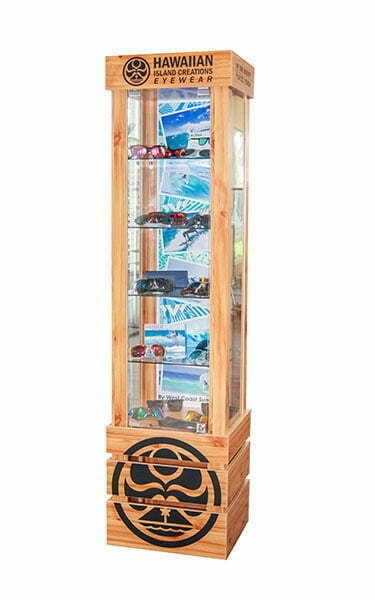How do I know if my sunglasses are polarized?
Just look through the polarized sunglasses at the reflection of any object on a window panel. Then, turn the sunglasses around as if they were the hands of a clock facing you. If the intensity of the reflection doesn’t change with respect to what you see through the window, they are not polarized.
Another way is to hold them at 90° to another pair labeled as polarized and if the lenses go dark where the lenses overlap, then your sunglasses are polarized too. If there’s no change, your lenses aren’t polarized.
What are Polarizing Lenses?
In sports and other outdoor leisure activities we react to what we see. We see by virtue of the light that enters our eyes. Without good sun wear, brightness and glare will diminish our best efforts. Glare results in a loss of visual performance, which is produced when an object or light source in the field-of-vision is brighter than the amount of light to which the eyes are adapted. Most tinted lenses will provide some absorption to dampen brightness, but only a polarized lens can effectively eliminate blinding glare.
What causes glare?
Light is made up of waves travelling in different directions. Vertical light is useful to the human eye; it helps us see. Horizontal light, however, simply creates glare. Glare is concentrated light reflecting off a horizontal shiny surface, such as a car windscreen, sand, water, snow or asphalt roads. It reduces visibility and can make it uncomfortable, painful and even dangerous to carry on driving, cycling, skiing or just sunbathing.
How do polarized lenses compare to standard tinted sunglasses?
Regular non-polarized sun lenses indiscriminately filter all light whether it is horizontal or vertical. Glare is dampened, but not eliminated. More importantly, by filtering all components of light, visual acuity is diminished. On the other hand polarized lenses allow in the vertical component of light, which is preferred for clear vision, while eliminating the easily scattered and skewed horizontal component of light. Vertically aligned light is preferred because it respects the natural tendency of the visual system to focus on the vertical component of an image.
Why are polarized sunglasses beneficial for water sports?
The glare of the sun on the sea and other water surfaces is highly polarized. Indeed, the glare can be almost completely horizontally polarized, depending on the height of the sun. In addition, all reflections from objects above water are partially polarized. These include clouds and even the sky (the reflected sky gives most of its blue colour to the sea).These are examples of polarization by reflection. Although the light from the sun is not polarized, it can be separated into two polarized components that are reflected and transmitted in different amounts by the surface of the water. More of the horizontal component will be reflected than the vertical component, thus partially polarizing the reflected light. With polarized sunglasses they will stop the glare and make the sea appear more transparent enabling you to see fish and rocks below the surface.
But how does it work exactly?
In order to understand the working principles of polarized sunglasses, let’s briefly discuss the reflection of light from the plain smooth surfaces. When light falls on a flat and smooth medium, the reflected light is directed in the horizontal planes rather than dispersing or scattering in all directions. The horizontally oriented reflected light is experienced as annoying flashes of white, known as glare. A prolonged exposure to such light intensities may result in temporary blindness.
In polarized sunglasses, a special filter is used. This filter helps in eliminating the reflected light of high intensity or glare. In other words, the polarized filter allows the passing of only a portion of light having wavelengths that are not aligned with the particles of the filter.
The composition of polarized filters are made up of a chemical compound coated on a transparent glass or plastic lens. The chemical film consists of tiny molecules that align in a parallel fashion with respect to one another.
If the chemical film is coated uniformly on the lens, the molecules absorb the entry of all light intensities that matches their alignment. Since glares are mostly caused by the horizontally oriented light waves, polarized sunglasses are designed in such a way that they allow passing of only vertical polarized light. With such polarized sunglasses, the texture and shape of objects becomes clearer, irrespective of the glare. This way, polarized lens reduce the glare effect.
One of the drawbacks of polarized sunglasses is that liquid crystal displays (LCD’s) may not be visible while viewing at specific angles. This minor drawback weighs little against the advantages of glare free vision for such activities as driving, boating or any other outdoor activities. Recent progress in the development of more inexpensive chemical coatings has put these fantastic glasses more affordable and into the hands of satisfied consumers.
Check out our best selling polarized models below!




 No products in the cart.
No products in the cart.  Polarized
Polarized Women
Women Kid’s sunglasses
Kid’s sunglasses HIC
HIC Sunglasses Displays
Sunglasses Displays Sunglasses Retainers
Sunglasses Retainers Reading I Sun Readers
Reading I Sun Readers